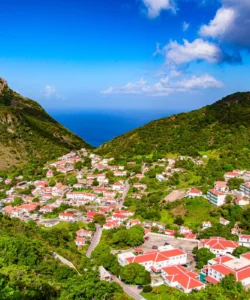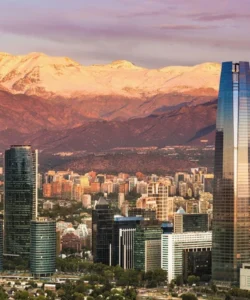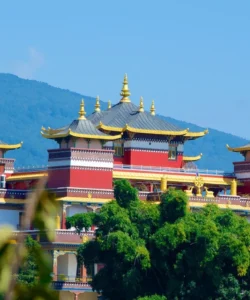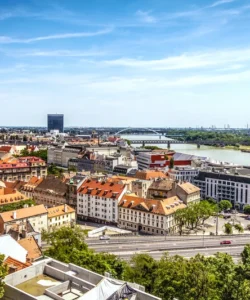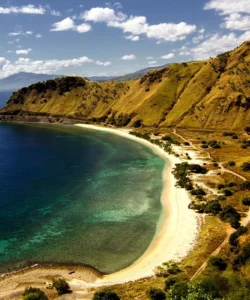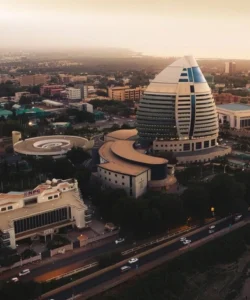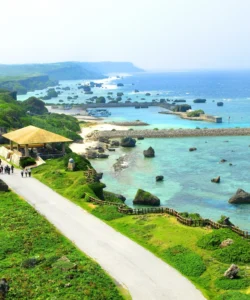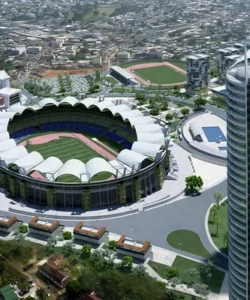Greenland is the world’s largest island, an autonomous territory within the Kingdom of Denmark. Situated between the Arctic and Atlantic Oceans, it is known for its immense ice sheet, dramatic fjords, unique Inuit culture, and abundant Arctic wildlife.
![]()
Area and Population:
Greenland has a total area of approximately 2,166,086 km² (836,319 sq mi). However, about 80% of this is covered by the Greenland ice sheet. Its population is extremely small, estimated to be around 56,700 inhabitants (as of 2024), making it the least densely populated territory in the world.
Language:
The official language of Greenland is Kalaallisut (West Greenlandic), an Inuit language. Danish is also widely spoken and is a co-official language in some contexts. English is increasingly common in tourist areas.
Currency:
The currency of Greenland is the Danish Krone (DKK).
Religion:
The predominant religion in Greenland is Christianity, primarily Lutheranism (Church of Denmark). Traditional Inuit spiritual beliefs also hold cultural significance for some.
Capital:
The capital and largest city of Greenland is Nuuk, located on the southwest coast. It is the cultural and economic center of the island, a modern town with a vibrant arts scene set against a backdrop of stunning nature.
Major Cities/Towns:
Greenland’s settlements are small and typically located along the coast, with very limited road connections between them. Besides Nuuk, other significant towns include:
- Sisimiut: Greenland’s second-largest town, located north of the Arctic Circle, known for dog sledding and outdoor activities.
- Ilulissat: A UNESCO World Heritage site, famous for the Ilulissat Icefjord and its giant icebergs.
- Qaqortoq: A colorful town in South Greenland, known for its “Stone and Man” sculptures and Norse history.
- Kangerlussuaq: A former U.S. air base, now a major international airport and gateway to the inland ice sheet.
- Tasiilaq: The largest town in East Greenland, offering dramatic mountain and fjord scenery.
Attractions and Wonders:
Greenland’s attractions are overwhelmingly natural, offering unparalleled Arctic experiences.
- Greenland Ice Sheet (Inland Ice): The second-largest ice body in the world (after the Antarctic ice sheet). Visitors can experience its vastness near Kangerlussuaq or embark on expeditions.
- Ilulissat Icefjord: A UNESCO World Heritage site where massive icebergs calve from the Sermeq Kujalleq glacier into Disko Bay. Boat tours and hiking trails offer spectacular views.
- Northern Lights (Aurora Borealis): A mesmerizing natural light display visible during the dark, clear winter nights, especially from September to April.
- Whale Watching: Opportunities to spot various whale species (humpback, fin, minke) in the coastal waters, particularly during summer.
- Dog Sledding: A traditional mode of transport and popular winter activity, offering an authentic Arctic experience in areas like Sisimiut and East Greenland.
- Hiking and Trekking: Vast wilderness areas offer incredible hiking opportunities, from short walks to multi-day expeditions (e.g., Arctic Circle Trail).
- Norse Ruins: Explore the historical sites of Viking settlements in South Greenland, including Erik the Red’s Brattahlid and the Hvalsey Church ruins.
- Nuuk: Visit the National Museum of Greenland (housing the Qilakitsoq mummies), the Nuuk Art Museum, and explore the colonial harbor.
- Kayaking: Experience Greenland’s fjords and icebergs from a kayak, a sport originating from the Inuit.
- Midnight Sun: In summer, above the Arctic Circle, the sun never sets, providing continuous daylight for exploration.
Architecture:
Greenlandic architecture has evolved from traditional sod houses to more modern structures, often designed to withstand the harsh Arctic climate.
- Colorful Houses: Many towns feature brightly painted wooden houses, a striking contrast against the often stark landscapes.
- Modern Nordic Influence: Newer public buildings and commercial structures in Nuuk and other larger towns often reflect functional and aesthetic Nordic design principles.
- Traditional Buildings: Remnants of turf houses and colonial-era Danish buildings can still be found in some areas.
Roads:
Greenland has a very limited road network. There are virtually no roads connecting different towns and settlements. Travel between towns is primarily by air (small planes and helicopters), coastal ferry (Arctic Umiaq Line), or boat tours during summer. In winter, dog sleds and snowmobiles are also used. Roads within towns are generally paved.
Hotels:
Accommodation in Greenland ranges from modern hotels in larger towns like Nuuk, Ilulissat, and Sisimiut, to smaller guesthouses, hostels, and basic lodges in more remote areas. Options are limited, and booking in advance is highly recommended, especially during the peak summer season. Some tours also offer wilderness cabins or tent camps.
Restaurants and Cuisine:
Greenlandic cuisine is largely based on the natural resources available in the Arctic environment, with a strong emphasis on seafood and game, often referred to as “Greenlandic food” or “Inuit cuisine.”
- Key Dishes:
- Mattak: Raw whale blubber with skin, a traditional delicacy (often polar whale or narwhal).
- Kiviaq: Fermented little auks (small seabirds) wrapped in sealskin, buried under rocks, and aged for months – a very traditional, pungent dish.
- Suaasat: A traditional soup, often made with seal, reindeer, or seabird, with onions and rice.
- Reindeer and Musk Ox: Wild game meats, often served roasted, stewed, or as steaks.
- Fish and Seafood: Abundant fresh fish like cod, halibut, capelin, Arctic char, and prawns are staples.
- Ammassat: Dried capelin, a common snack.
- Berries: In summer, various wild berries like crowberries and blueberries are harvested.
- Restaurants: Nuuk, Ilulissat, and Sisimiut have restaurants offering a mix of traditional Greenlandic dishes and international cuisine (often Nordic or Danish-inspired). Many hotels also have restaurants. In smaller settlements, dining options are more basic, focusing on local fare.
- Cafes: Often serve Greenlandic coffee and pastries.
- Pilersuisoq: Local supermarkets are important for supplies and offer some ready-to-eat options.
Keep in mind that tourism infrastructure is still developing in many parts of Greenland, and travel can be expensive due to logistical challenges.


